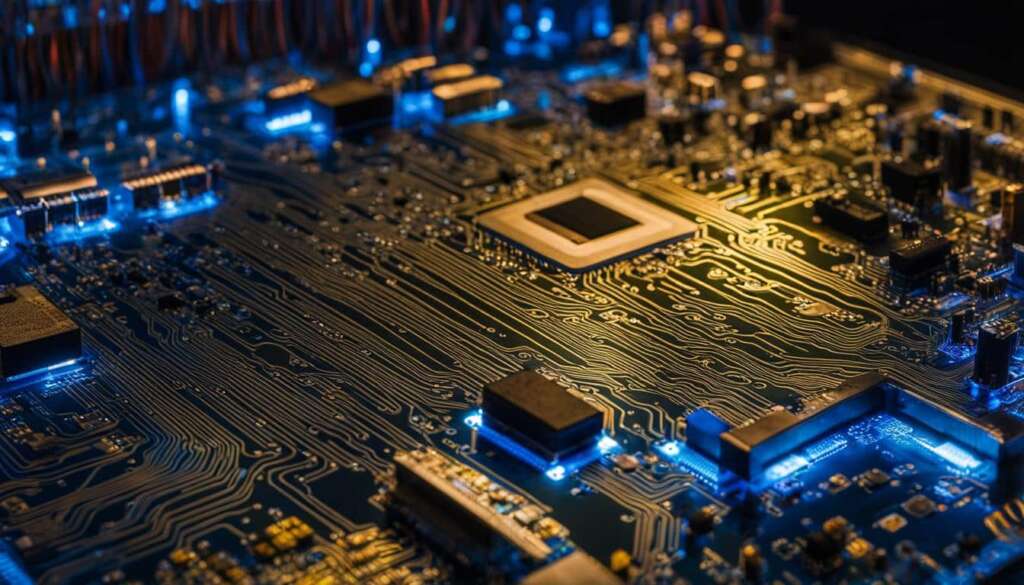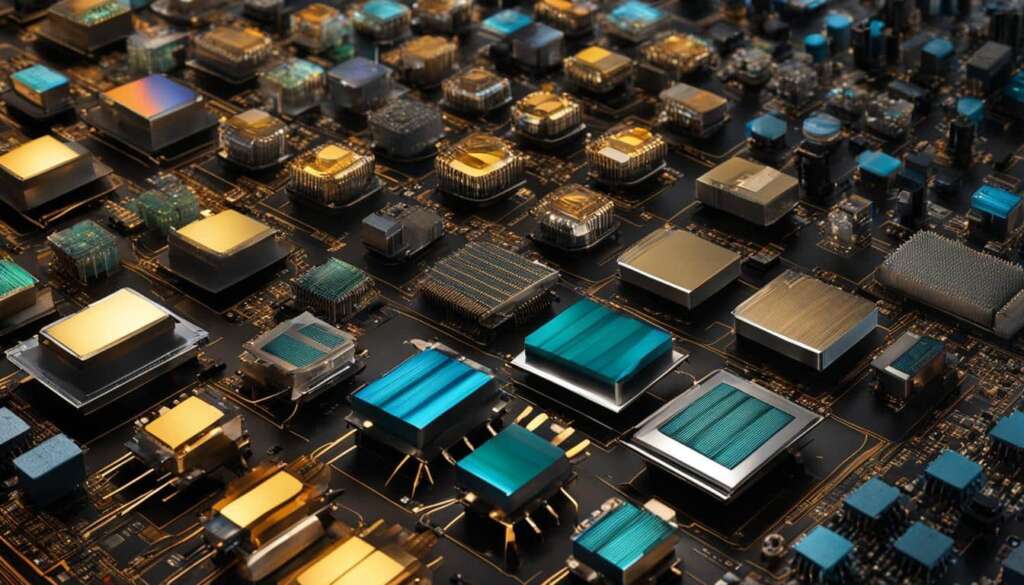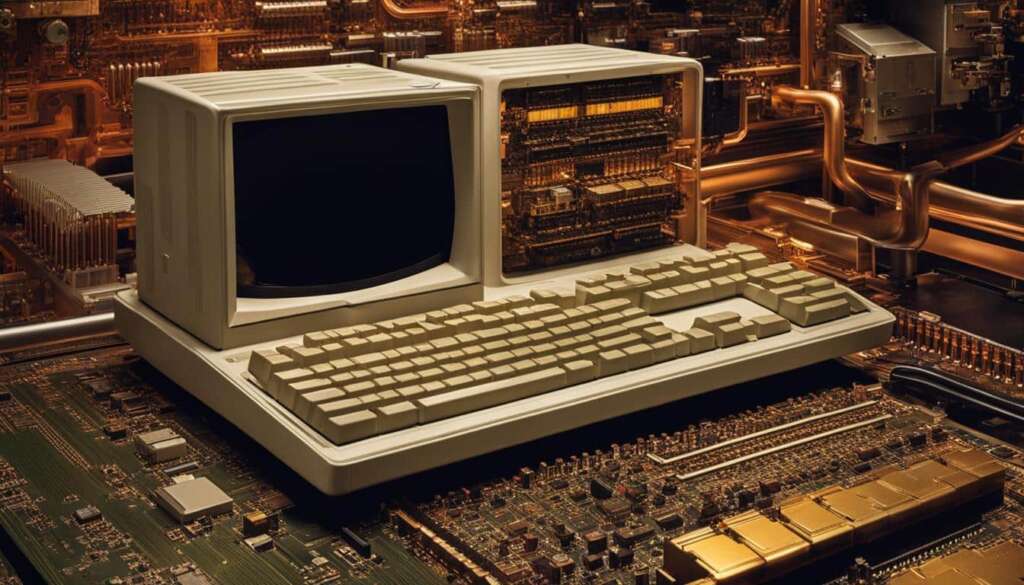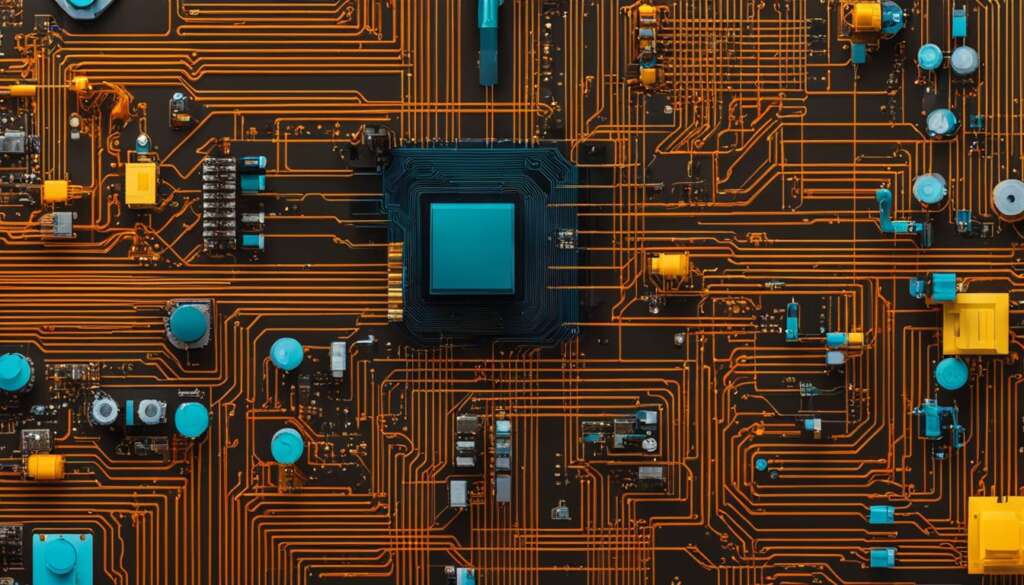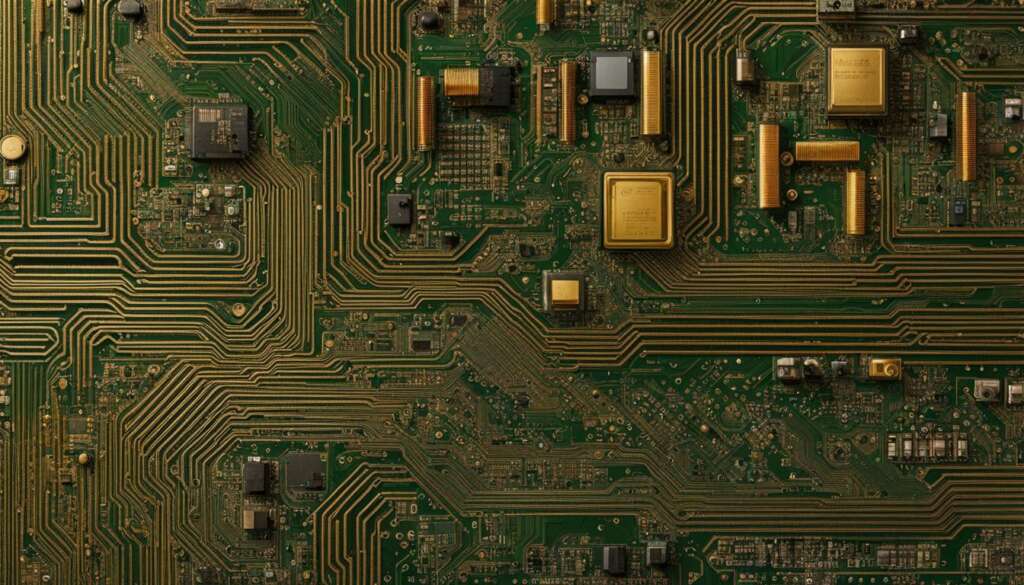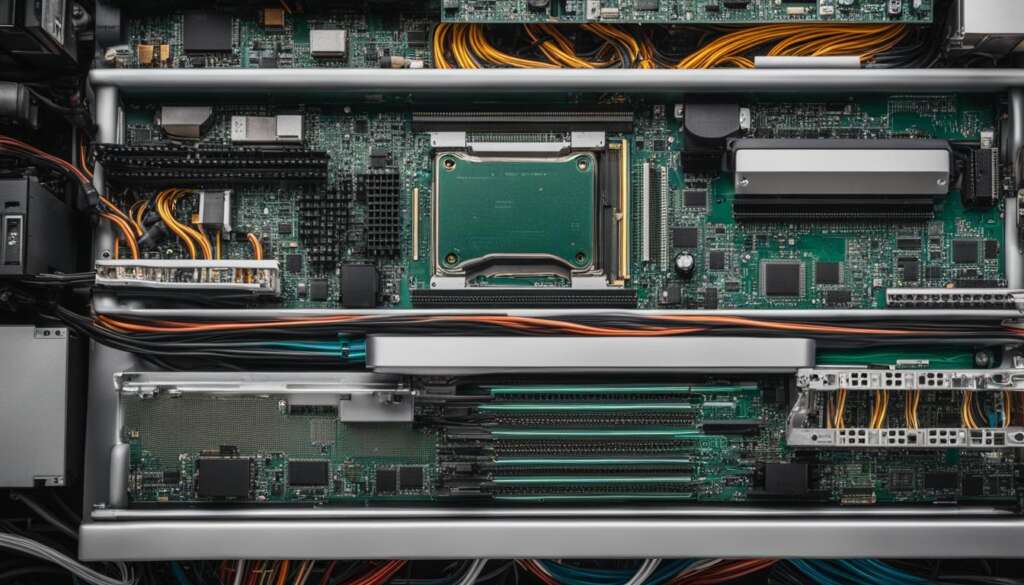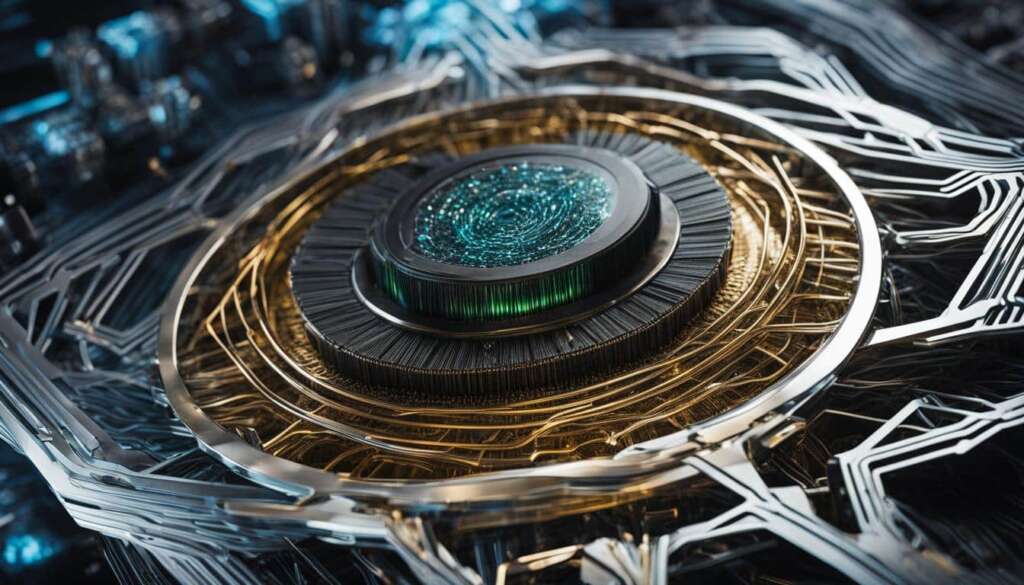Table of Contents
Processors and operating systems, often referred to as CPU and OS, have a close and interdependent relationship. The architecture of the processor plays a crucial role in determining the design and functionality of the operating system software. This interaction between hardware and software has paved the way for significant advancements in processor technology, which, in turn, have shaped modern operating systems.
Over the years, processors have undergone remarkable advancements, including increased speed and the introduction of multiprocessor systems. These technological breakthroughs have had a profound impact on the design and functionality of operating systems.
Such advancements have enabled better hardware and software interaction, resulting in improved performance and enhanced compatibility between processors and operating systems.
As we delve deeper into the evolution of operating systems, it becomes evident that the influence of processors on their development cannot be overstated. From the types of operating systems to their compatibility requirements and design elements, processors have played a pivotal role.
Stay tuned to discover how the evolution of processors has shaped operating systems throughout history, impacting hardware development, application development, security measures, and even the emergence of distributed systems.
Evolution of Operating Systems
Operating systems have undergone significant evolution to meet the changing demands of hardware, applications, and security threats. Different types of operating systems have emerged, each with unique compatibility requirements and design elements. Let’s explore some key aspects of this evolution:
Types of Operating Systems
Operating systems can be classified into various types, including batch processing systems, multiprogramming systems, time-sharing systems, and networked systems. Each type has its own characteristics and serves different purposes.
Operating System Compatibility
Operating systems need to be compatible with the hardware they run on, ensuring that they can effectively utilize the capabilities of the underlying hardware. Compatibility also extends to software applications, allowing them to run smoothly on different operating systems.
Operating System Design Elements
Operating systems incorporate various design elements to provide efficient resource management, multitasking capabilities, security features, and user-friendly interfaces. These design elements are crucial for the overall functionality and performance of an operating system.
Microkernel Architecture
The introduction of the microkernel architecture revolutionized operating system development. This design approach separates the kernel’s essential functions from other services, resulting in a more modular and flexible operating system. The microkernel architecture facilitates the development of distributed operating systems and enables seamless interaction with remote server processes.
Multithreading and Symmetric Multiprocessing
Multithreading and symmetric multiprocessing techniques have greatly enhanced the performance and resource utilization of operating systems. Multithreading allows for the execution of multiple threads within a process, maximizing resource utilization. Symmetric multiprocessing distributes processes or threads across multiple processors, leading to improved performance and availability.
Object-Oriented Design
Object-oriented design has been applied to operating system development to introduce modular extensions without compromising system integrity. This approach allows for customization of an operating system while maintaining stability. Object-oriented design also enables the development of distributed tools and full-fledged distributed operating systems.
| Operating System Type | Main Characteristics |
|---|---|
| Batch Processing Systems | Processes a large number of similar jobs with no user interaction |
| Multiprogramming Systems | Allows multiple programs to run simultaneously by sharing resources |
| Time-Sharing Systems | Enables interactive computing by rapidly switching between tasks |
| Networked Systems | Enables computers to communicate and share resources over a network |
Impact of Hardware Advancements on Operating Systems
Hardware advancements have revolutionized the capabilities of operating systems, leading to significant improvements in performance and efficiency. The introduction of multiprocessor systems has enabled operating systems to execute tasks simultaneously across multiple processors, resulting in enhanced speed and computational power. Additionally, the increased processor speed has allowed for faster data processing and improved responsiveness.
Operating systems have also benefited from high-speed network attachments, which enable seamless communication and data transfer between devices. This has facilitated the development of distributed systems and improved collaboration and resource sharing. Furthermore, the diverse range of memory storage devices, such as solid-state drives (SSDs), has enabled faster data access and storage, improving overall system performance.
The impact of these hardware advancements can be seen in various aspects of operating systems. For instance, the ability to support multiple processors has led to the development of multiprocessing support within operating systems. This enables efficient utilization of system resources and enhances multitasking capabilities.
Table: Impact of Hardware Advancements on Operating Systems
| Advancements | Impact on Operating Systems |
|---|---|
| Multiprocessor Systems | Simultaneous execution of tasks across multiple processors, improved speed and computational power. |
| Increased Processor Speed | Faster data processing and improved responsiveness. |
| High-Speed Network Attachments | Seamless communication, improved collaboration, and resource sharing. |
| Diverse Range of Memory Storage Devices | Faster data access and storage, improved system performance. |
In conclusion, hardware advancements have played a crucial role in shaping operating systems. The integration of multiprocessor systems, increased processor speed, high-speed network attachments, and diverse memory storage devices has led to improved performance, enhanced multitasking capabilities, and efficient resource utilization within operating systems.
Influence of Application Development on Operating Systems
The development of multimedia applications and the widespread use of the Internet and Web access have had a significant influence on the design and functionality of operating systems. As technology has advanced, operating systems have evolved to support the demands of these applications and provide efficient resource management, network connectivity, and security measures.
Operating systems now integrate seamlessly with multimedia applications, allowing users to create, edit, and share various types of media such as images, videos, and audio files. These applications require robust processing power and efficient memory management, and operating systems have been designed to optimize performance in these aspects.
Furthermore, the rise of client/server computing has also impacted operating systems. Client/server computing enables the distribution of processing tasks between clients (user devices) and servers (remote systems). Operating systems have been developed to facilitate communication between clients and servers, ensuring efficient data exchange and providing a seamless user experience.
The integration of multimedia applications, Internet and Web access, and the adoption of client/server computing have transformed operating systems into powerful platforms that allow users to interact with various types of media, access information from the internet, and collaborate with remote systems. These advancements have significantly enhanced the functionality and user experience of operating systems in today’s digital age.
Security Measures in Operating Systems
As technology continues to advance, so do the risks associated with it. With the increasing prevalence of Internet access, operating systems have become vulnerable to various security risks, including viruses, worms, and hacking techniques. To protect against these threats, operating systems have incorporated stronger security measures.
| Security Risks | Security Measures |
|---|---|
| Viruses | Built-in firewalls and antivirus software integration. |
| Worms | Regular security updates and patches to prevent worm propagation. |
| Hacking Techniques | Secure authentication protocols and encryption algorithms to protect against unauthorized access. |
Operating system developers have recognized the need to prioritize security, ensuring the safety of user data and the overall integrity of the system. By integrating features such as built-in firewalls, antivirus software integration, and secure authentication protocols, operating systems can mitigate the risks posed by viruses, worms, and hacking techniques.
“The escalating security risks associated with Internet access, such as viruses, worms, and hacking techniques, have compelled operating systems to incorporate stronger security measures.”
Moreover, regular security updates and patches are provided to address newly discovered vulnerabilities and prevent the propagation of worms. These proactive measures help to maintain the security and stability of operating systems.
As technology continues to evolve, operating systems must adapt to new security challenges. By integrating stronger security measures, operating systems can protect users from emerging threats and ensure the safety of their data in an increasingly interconnected world.

Microkernel Architecture and Distributed Systems
The microkernel architecture has revolutionized operating system development by introducing a modular approach that enhances scalability and simplifies the construction of distributed systems. Unlike traditional monolithic kernels, the microkernel design separates essential functions from non-essential ones, delegating non-essential services to processes or servers running in user mode. This architecture allows operating systems to effectively support distributed environments, where processes and services can be spread across multiple machines or networked systems.
With a microkernel architecture, operating systems can seamlessly interact with local and remote server processes, enabling the development of powerful distributed tools and full-fledged distributed operating systems. The modular nature of a microkernel makes it easier to extend the functionality of an operating system without compromising system integrity. By adding modular extensions, developers can customize the operating system to meet specific needs while maintaining overall stability.
“The microkernel architecture empowers operating systems to embrace distributed systems, offering a flexible and efficient system architecture that can adapt to changing demands.” – Operating Systems Researcher
In a distributed system, the microkernel manages the communication between processes and the sharing of resources, facilitating efficient coordination and collaboration among different components. This architecture enhances fault tolerance and allows for dynamic reconfigurations, making distributed systems more resilient and adaptable to evolving environments.
| Key Benefits of Microkernel Architecture in Distributed Systems |
|---|
| Modular design enables easy customization and extension |
| Efficient resource management and coordination |
| Enhanced fault tolerance and adaptability |
| Seamless interaction with local and remote server processes |
| Support for powerful distributed tools and full-fledged distributed operating systems |
The microkernel architecture continues to shape the development of operating systems, allowing them to thrive in distributed environments. Its modular and scalable nature, coupled with seamless interaction capabilities, empowers operating systems to meet the challenges of modern computing landscapes.
The Impact of Multithreading and Symmetric Multiprocessing on Operating Systems
Multithreading and symmetric multiprocessing are essential techniques that have greatly influenced the performance and resource utilization of modern operating systems. These advancements have revolutionized the way operating systems handle multiple tasks and processes simultaneously, resulting in improved efficiency and overall system performance.
Multithreading involves dividing a process into multiple threads that can execute concurrently. This technique allows for better resource utilization, as the threads can run independently and efficiently on available processor cores. By leveraging multithreading, operating systems can handle multiple tasks simultaneously, enhancing responsiveness and reducing latency.
Symmetric multiprocessing, on the other hand, involves scheduling processes or threads across multiple processors or processor cores. This technique allows for increased performance and availability, as tasks can be distributed and executed in parallel across multiple processing units. The ability of operating systems to efficiently allocate and utilize resources across symmetric multiprocessing systems leads to improved overall system performance and responsiveness.
Together, multithreading and symmetric multiprocessing optimize resource utilization, enhance performance, and support the growing demands of modern applications. These techniques have become cornerstones of operating system design, ensuring that the system can efficiently handle multiple tasks, processes, and user interactions simultaneously.
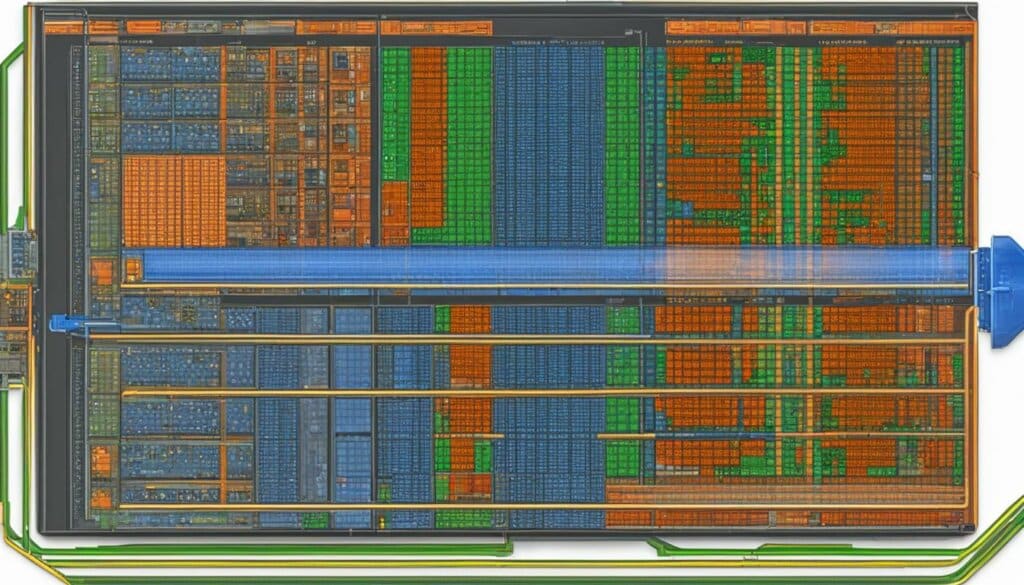
Advantages of Multithreading and Symmetric Multiprocessing:
- Improved resource utilization: By dividing processes into multiple threads and distributing tasks across multiple processors, operating systems can make better use of available resources, maximizing efficiency.
- Enhanced performance: Multithreading and symmetric multiprocessing enable parallel execution of tasks, resulting in faster processing times and improved system responsiveness.
- Scalability: These techniques allow operating systems to scale and adapt to varying workloads by efficiently distributing tasks across available processing units.
- Increased availability: By utilizing multiple processors or processor cores, operating systems can ensure continuous availability and minimize downtime in case of hardware failures.
The combination of multithreading and symmetric multiprocessing has significantly impacted the design and functionality of operating systems, allowing them to meet the demands of modern computing environments and deliver optimal performance.
Object-Oriented Design in Operating Systems
The concept of object-oriented design has revolutionized the development of operating systems, allowing for the creation of modular extensions that enhance system functionality without compromising system integrity. By adopting an object-oriented approach, operating systems can be customized to meet specific needs, providing a flexible and efficient system architecture.
Object-oriented design facilitates the development of distributed operating systems, enabling seamless interaction between local and remote server processes. This distributed approach enhances system scalability and allows for the deployment of distributed tools that can span multiple machines. With object-oriented design, operating systems can effectively manage resources, ensuring optimal performance across distributed environments.
“Object-oriented design in operating systems provides discipline in adding modular extensions, enabling customization without sacrificing system stability.”
In addition to supporting distributed operating systems, object-oriented design also promotes code reusability and maintainability. Operating systems built with an object-oriented approach consist of independent, self-contained objects that can be easily modified, extended, and reused. This modularity contributes to efficient system development, as developers can focus on specific objects or modules without disrupting the overall system architecture.
| Advantages of Object-Oriented Design in Operating Systems | Benefits |
|---|---|
| Modularity | Enhances code reusability and maintainability |
| Flexibility | Customization without compromising system stability |
| Scalability | Supports distributed operating systems and distributed tools |
Overall, object-oriented design has significantly influenced the development and evolution of operating systems, allowing for flexible and scalable systems that can adapt to changing needs. By employing modular extensions and ensuring system integrity, operating systems built with an object-oriented approach can provide efficient resource management, support distributed environments, and deliver a seamless user experience.
Historical Evolution of Operating Systems
The evolution of operating systems has been a fascinating journey, with significant milestones shaping the way we interact with technology today. From the early days of batch processing systems to the introduction of graphical user interfaces (GUIs) and the integration of artificial intelligence, operating systems have continuously evolved to meet the changing needs of users and advancements in hardware technology.
Batch processing systems were among the first types of operating systems, allowing users to submit jobs in batches and have them processed sequentially. This marked a significant shift from manual instructions written in machine language to automated processing, enabling more efficient and reliable data processing.
As computers became more powerful and capable, the evolution of operating systems led to the development of multiprogramming systems, which enabled multiple programs to run simultaneously. This increased system utilization and improved overall efficiency, allowing for better multitasking and resource management.
The introduction of time-sharing systems revolutionized the way users interacted with computers. These systems allowed multiple users to access the same computer simultaneously, providing each user with a dedicated share of computing time. Time-sharing systems laid the foundation for modern interactive computing, enabling widespread adoption and accessibility.
The advent of graphical user interfaces (GUIs) was a game-changer in the evolution of operating systems. GUIs introduced a visual way of interacting with computers, utilizing icons, windows, and menus. This shift made computers more user-friendly and accessible to a wider audience, paving the way for the mass adoption of personal computers.
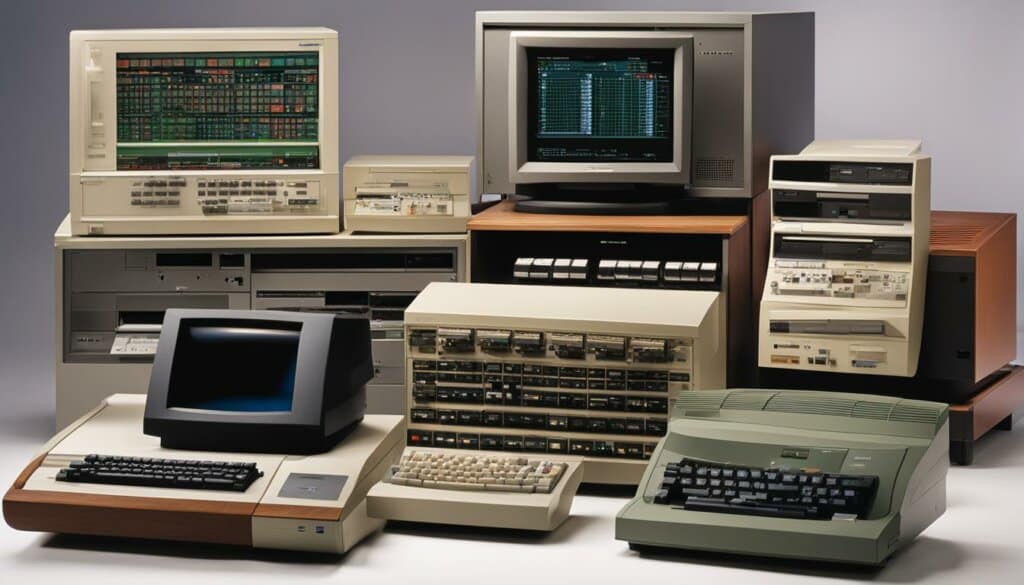
With the rise of networked systems, operating systems had to adapt to facilitate communication and resource sharing between computers. Networked operating systems enabled seamless connectivity and data exchange, giving birth to the interconnected world we live in today.
Mobile operating systems have become an integral part of our daily lives, powering smartphones and tablets. These operating systems have evolved to provide a rich user experience, supporting a wide range of applications and functionalities tailored for mobile devices.
The integration of artificial intelligence (AI) into operating systems is the latest frontier in their evolution. AI-powered operating systems can analyze user behavior, adapt to user preferences, and provide personalized experiences. This integration opens up new possibilities in areas such as virtual assistants, predictive capabilities, and enhanced system performance.
In conclusion, the historical evolution of operating systems has been driven by advancements in technology and the changing needs of users. From batch processing systems to GUIs, networked systems, mobile operating systems, and AI integration, each stage has brought us closer to a more efficient, user-friendly, and interconnected digital world.
Impact of Operating Systems on Hardware Development
Operating systems have had a profound impact on the development of computer hardware. As operating systems have evolved and introduced new features and functionalities, hardware manufacturers have responded by enhancing their products to meet the demands of these advancements. Let’s explore some key areas where operating systems have influenced hardware development.
Memory Management Units
One significant area of impact is in memory management. Operating systems have introduced concepts like virtual memory, which allows for efficient utilization of limited physical memory resources. To support this functionality, hardware manufacturers have developed memory management units (MMUs) that facilitate the translation of virtual memory addresses to physical addresses. MMUs help optimize memory access and provide secure memory isolation, ensuring that different processes cannot interfere with one another.
Multitasking and Multiprocessing Support
Operating systems have also driven advancements in multitasking and multiprocessing capabilities. With the need to run multiple applications simultaneously, operating systems have implemented multitasking support, allowing for efficient time-sharing of resources. To enable multitasking, hardware manufacturers have developed processors with multiple cores and advanced scheduling algorithms. These developments have led to significant performance improvements, as each core can handle multiple tasks simultaneously.
Furthermore, the introduction of multiprocessing support in operating systems has pushed hardware manufacturers to create more powerful and efficient processors. Multiprocessing allows for the execution of multiple processes or threads across multiple processors. This parallel processing capability greatly enhances system performance and enables faster execution of complex tasks.
| Operating System Impact | Hardware Development |
|---|---|
| Virtual Memory | Memory Management Units (MMUs) |
| Multitasking | Processors with multiple cores |
| Multiprocessing | More powerful and efficient processors |
Conclusion
The close relationship between processors and operating systems has shaped the evolution of technology. As processors have advanced, operating systems have adapted to take advantage of new capabilities and functionalities. The design and functionality of operating systems have been influenced by hardware advancements, application development, security considerations, and the needs of users.
The continuous evolution of processors and operating systems has resulted in improved performance, enhanced compatibility, and seamless hardware and software interaction in today’s tech-driven era. These advancements have allowed for better hardware and software interaction, improved performance, and enhanced compatibility between processors and operating systems.
From the early days of manual instructions in machine language to modern systems with graphical user interfaces (GUIs) and mobile operating systems, the evolution of technology has been driven by the intricate relationship between processors and operating systems. With each stage of evolution, operating systems have introduced new features and functionalities, while hardware manufacturers have responded by adding capabilities and improvements to their products.
As we move towards the future, the evolution of processors and operating systems will continue to shape the technology landscape. The constant interplay between hardware and software will drive innovation and enable the development of more powerful, efficient, and user-friendly systems. The processors and operating systems of tomorrow will continue to push the boundaries of what is possible and shape the way we interact with technology.
FAQ
How have processors shaped modern operating systems?
Processors have influenced the design and functionality of operating systems through advancements in speed and multiprocessor systems, resulting in improved hardware and software interaction, enhanced performance, and compatibility between processors and operating systems.
How have operating systems evolved over the years?
Operating systems have evolved to meet the changing demands of hardware, applications, and security threats. Different types of operating systems have emerged with their own compatibility requirements and design elements, incorporating features such as the microkernel architecture, multithreading, symmetric multiprocessing, and object-oriented design.
What impact have hardware advancements had on operating systems?
Hardware advancements, including multiprocessor systems, increased processor speed, high-speed network attachments, and diverse memory storage devices, have driven the need for operating systems to adapt and effectively utilize hardware capabilities. This has resulted in improved performance and efficiency.
How has application development influenced operating systems?
Operating systems have had to adapt to support multimedia applications, Internet and Web access, and client/server computing. This adaptation includes efficient resource management, network connectivity, and security measures to facilitate seamless interaction between applications and operating systems.
What security measures are incorporated into operating systems?
Operating systems now include features such as built-in firewalls, antivirus software integration, and secure authentication protocols to address security risks associated with Internet access, such as viruses, worms, and hacking techniques. This prioritizes user data safety and system integrity.
What is the microkernel architecture and how does it impact operating systems?
The microkernel architecture simplifies implementation and facilitates the construction of distributed systems by assigning essential functions to the kernel and delegating other OS services to processes or servers running in user mode. This enables more effective support for distributed environments and the development of distributed tools and full-fledged distributed operating systems.
How do multithreading and symmetric multiprocessing improve operating system performance?
Multithreading divides a process into multiple threads that can execute concurrently, leading to better resource utilization. Symmetric multiprocessing schedules processes or threads across multiple processors, resulting in increased performance and availability. These techniques can be used in tandem to improve system performance.
What is object-oriented design’s role in operating systems?
Object-oriented design provides discipline in adding modular extensions to operating systems without compromising system integrity. This allows for customization to meet specific needs while maintaining overall system stability. This design approach also facilitates the development of distributed tools and full-fledged distributed operating systems.
What is the historical evolution of operating systems?
Operating systems have evolved from manual instructions in machine language to modern systems with graphical user interfaces (GUIs) and mobile operating systems. Key stages include batch processing systems, multiprogramming systems, time-sharing systems, networked systems, and the integration of artificial intelligence.
How have operating systems impacted hardware development?
The development of operating systems with new features and functionalities has prompted hardware manufacturers to add capabilities and improvements to their products. Examples include the introduction of virtual memory in operating systems leading to the development of memory management units in hardware, and the demand for multitasking and multiprocessing support resulting in more powerful processors and components.
What is the relationship between processors and operating systems?
Processors and operating systems have a close relationship as advancements in processors have influenced the design and functionality of operating systems. This continuous evolution has resulted in improved performance, enhanced compatibility, and seamless interaction between hardware and software in today’s tech-driven era.

